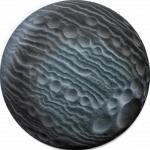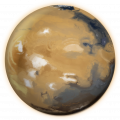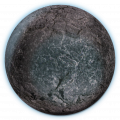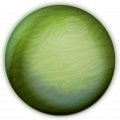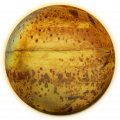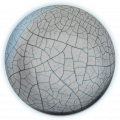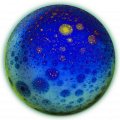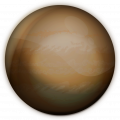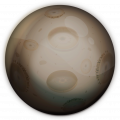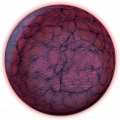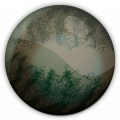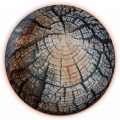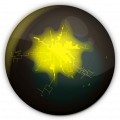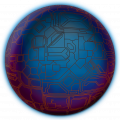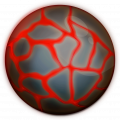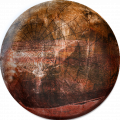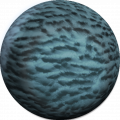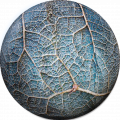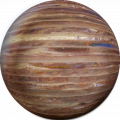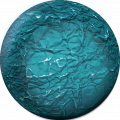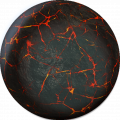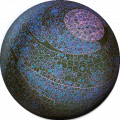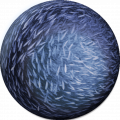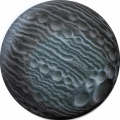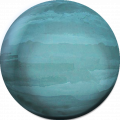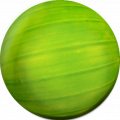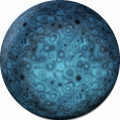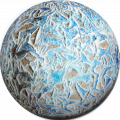Difference between revisions of "Planets"
(→Nanobot Resistance) |
(→Planet Attacks) |
||
| (26 intermediate revisions by the same user not shown) | |||
| Line 1: | Line 1: | ||
<div class="page_icon"> | <div class="page_icon"> | ||
| − | [[File:Bupriewel.png|150px | + | [[File:Bupriewel.png|150px]] |
</div> | </div> | ||
The main goal in Bacterial Takeover is to destroy as many planets as possible. | The main goal in Bacterial Takeover is to destroy as many planets as possible. | ||
| − | Attacking a planet uses up all [[Resources#Bacteria|'''Bacteria''']] and [[Resources#Nanobots|'''Nanobots''']], and resets [[Colonies|'''colonies''']] and [[Upgrades|''' | + | Attacking a planet uses up all [[Resources#Bacteria|'''Bacteria''']] and [[Resources#Nanobots|'''Nanobots''']], and resets [[Colonies|'''colonies''']] and [[Upgrades|'''Bacteria upgrades''']]. Destroying planets unlocks new upgrades and features, such as [[Research#Colony Irradiation|Colony irradiation]] or [[Research#Nanobot Production|Nanobot production]]. |
After entering a '''[[Black Hole]]''', the player enters an alternate timeline where none of the planets have been destroyed. The planets in the alternate timeline have the same stats and defenses, but can unlock different features. For example, destroying the fifth planet after the first Black Hole unlocks [[Research#Bacteria Irradiation|'''Bacteria irradiation''']]. | After entering a '''[[Black Hole]]''', the player enters an alternate timeline where none of the planets have been destroyed. The planets in the alternate timeline have the same stats and defenses, but can unlock different features. For example, destroying the fifth planet after the first Black Hole unlocks [[Research#Bacteria Irradiation|'''Bacteria irradiation''']]. | ||
The first 34 planets have unique descriptions and artwork, but the others are generated automatically. | The first 34 planets have unique descriptions and artwork, but the others are generated automatically. | ||
| + | |||
| + | <br><br><div style="float:left; padding-right:30px; padding-bottom:20px ">__TOC__</div> | ||
=Planet Attacks= | =Planet Attacks= | ||
| − | + | Initially, it's possible to attack a planet only once you have enough [[bacteria]] to destroy 100% of the population. Starting from Planet 6, you can attack an unlimited number of times until it is finally destroyed. | |
A planet counts as destroyed if its remaining population has been reduced to 0. However, it's not possible to attack a planet if the player cannot destroy enough population to gain even 1 [[Gene Strands|Gene Strand]]. | A planet counts as destroyed if its remaining population has been reduced to 0. However, it's not possible to attack a planet if the player cannot destroy enough population to gain even 1 [[Gene Strands|Gene Strand]]. | ||
| + | |||
| + | The amount of population that is destroyed during the attack is equal to the total of the population destroyed by [[Resources#Bacteria|Bacteria]] and [[Nanobots]]. | ||
| + | |||
| + | ==Using Bacteria== | ||
| + | The formula that determines the percentage of population that will be destroyed by [[Resources#Bacteria|Bacteria]] is based on the [[SIR Model|SIR model]] for the spread of infectious diseases. | ||
| + | |||
| + | For this reason, it can sometimes take more Bacteria to kill the last 1% of the population that it was required to destroy the first 99%. | ||
| + | |||
| + | The total number of Bacteria required to destroy 100% of the initial population is calculated according to the following formula: | ||
| + | |||
| + | '''BacteriaNeeded = Population × 9.9 × 15<sup>[[Planets#Shields|ShieldLevel]]</sup>''' | ||
| + | |||
| + | |||
| + | ==Using Nanobots== | ||
| + | {{nanobot formula description}} | ||
==Rewards== | ==Rewards== | ||
| Line 22: | Line 39: | ||
Destroying planets also unlocks new game mechanics and [[Upgrades|upgrades]]. | Destroying planets also unlocks new game mechanics and [[Upgrades|upgrades]]. | ||
| + | |||
| + | ==Reset== | ||
| + | Both attacking and destroying planets resets certain [[Resources|resources]], [[Upgrades|upgrades]], and bonuses. | ||
| + | |||
| + | <u>Attacking</u> a planet '''resets''': | ||
| + | * [[Resources#Bacteria|Bacteria]] | ||
| + | * [[Colonies|Bacteria Colonies]] | ||
| + | * [[Upgrades#Bacteria Upgrades|Bacteria Upgrades]] | ||
| + | * [[Nanobots]] (if the planet was not destroyed) | ||
| + | |||
| + | <u>Attacking</u> a planet '''does not reset''': | ||
| + | * [[Gene Strands]] | ||
| + | * [[Upgrades#Gene Strand Upgrades|Gene Strand Upgrades]] | ||
| + | * [[Evolved Bacteria]] | ||
| + | * Bonuses from [[Planetary Research]] | ||
| + | * [[Achievements]] | ||
| + | * [[Diamonds]] | ||
| + | * [[Resources#Scientists|Scientists]] | ||
| + | * [[Resources#Dark Matter|Dark Matter]] | ||
| + | |||
| + | <u>Destroying</u> a planet '''resets''': | ||
| + | * Bonuses from [[Planetary Research]] | ||
| + | |||
| + | <u>Destroying</u> a planet '''does not reset''': | ||
| + | * [[Nanobots]] that were not necessary to destroy the planet | ||
=Planet Population= | =Planet Population= | ||
| − | Each planet has a larger population than the previous one. The higher the population, the more '''[[Gene Strands]]''' can be earned from completely destroying the planet. | + | <div class="page_icon"> |
| + | [[File:population.png|80px]] | ||
| + | </div> | ||
| + | Each planet has a larger population than the previous one. Population can reach [[Large Numbers|'''large numbers''']] in early game, which are displayed using [[Large Numbers#Abbreviations|abbreviations]] or [[Large Numbers#Scientific Notation|scientific notification]], if it has been enabled in the settings menu. The higher the population, the more '''[[Gene Strands]]''' can be earned from completely destroying the planet. | ||
| − | Even though planet population is not technically a form of defense, planets with higher population are harder to destroy, because they require additional | + | Even though planet population is not technically a form of defense, planets with higher population are harder to destroy, because they require additional [[Resources#Bacteria|Bacteria]] to infect. |
It's possible to view the population of previous planets since the last [[Black Hole]] in the '''Destroyed Planets''' panel. | It's possible to view the population of previous planets since the last [[Black Hole]] in the '''Destroyed Planets''' panel. | ||
| Line 34: | Line 79: | ||
===Nanobot Resistance=== | ===Nanobot Resistance=== | ||
| − | Nanobot resistance reduces the effectiveness of [[ | + | Nanobot resistance reduces the effectiveness of [[Nanobots|Nanobots]]. |
{{nanobot resistance table}} | {{nanobot resistance table}} | ||
| − | Nanobot resistance coefficient is determined by Nanobot resistance and it is used to calculate the effectiveness of Nanobots when attacking the planet. | + | Nanobot resistance coefficient is determined by Nanobot resistance and it is used to calculate the effectiveness of Nanobots when [[Planets#Planets#Using_Nanobots|attacking the planet]]. |
| − | + | <br><br> | |
| + | ---- | ||
<br> | <br> | ||
| Line 46: | Line 92: | ||
===Shields=== | ===Shields=== | ||
| − | ::::::::Starting with '''[[Tesmielara]] | + | ::::::::Starting with '''[[Tesmielara]]''' (Planet 20), all planets have shields, which makes them harder to destroy. |
| − | ::::::::The shield level increases by 1 for each planet. | + | ::::::::The shield level increases by 1 for each planet. So the next planet after Tesmielara will have Level 2 shields and so on. |
| − | :::::::: | + | ::::::::Shields multiply the amount of [[Resources#Bacteria|Bacteria]] needed to destroy the planet by <code>15<sup>x</sup></code>, where <code>x</code> is the shield level. |
<br><br><br><br> | <br><br><br><br> | ||
=Planet List= | =Planet List= | ||
| − | + | ==Early Game Planets (1-34)== | |
| + | |||
{{Planet list}} | {{Planet list}} | ||
| − | + | ||
| + | ==Late Game Planets (34+)== | ||
| + | {{late game planets description}} | ||
| + | {{late game planets}} | ||
| + | |||
| + | =Related Pages= | ||
| + | *[[SIR Model]] | ||
| + | *[[Gene Strands]] | ||
| + | *[[Bacteria]] | ||
| + | *[[Planetary Research]] | ||
| + | *[[Planetary Weakness]] | ||
| + | |||
| + | [[Category:Game Mechanics]] | ||
Latest revision as of 13:08, 8 September 2021
The main goal in Bacterial Takeover is to destroy as many planets as possible.
Attacking a planet uses up all Bacteria and Nanobots, and resets colonies and Bacteria upgrades. Destroying planets unlocks new upgrades and features, such as Colony irradiation or Nanobot production.
After entering a Black Hole, the player enters an alternate timeline where none of the planets have been destroyed. The planets in the alternate timeline have the same stats and defenses, but can unlock different features. For example, destroying the fifth planet after the first Black Hole unlocks Bacteria irradiation.
The first 34 planets have unique descriptions and artwork, but the others are generated automatically.
Planet Attacks
Initially, it's possible to attack a planet only once you have enough bacteria to destroy 100% of the population. Starting from Planet 6, you can attack an unlimited number of times until it is finally destroyed.
A planet counts as destroyed if its remaining population has been reduced to 0. However, it's not possible to attack a planet if the player cannot destroy enough population to gain even 1 Gene Strand.
The amount of population that is destroyed during the attack is equal to the total of the population destroyed by Bacteria and Nanobots.
Using Bacteria
The formula that determines the percentage of population that will be destroyed by Bacteria is based on the SIR model for the spread of infectious diseases.
For this reason, it can sometimes take more Bacteria to kill the last 1% of the population that it was required to destroy the first 99%.
The total number of Bacteria required to destroy 100% of the initial population is calculated according to the following formula:
BacteriaNeeded = Population × 9.9 × 15ShieldLevel
Using Nanobots
The percentage of population destroyed by Nanobots is calculated according to the formula
where
- Population Destroyed - how many percent of the initial planet population will be destroyed by Nanobots in the current attack. This is limited to 40% of the initial population, so it's impossible to completely destroy a planet only with Nanobots in the first attack.
- Nanobot Count - the current number of Nanobots owned by the player.
- Nanobot Resistance Coefficient - a number that is determined by the Nanobot resistance of the current planet.
- Nanobot Strength - a multiplier that is set at 1 by default and is multiplied by any increases to Nanobot strength, such as Planetary Research discoveries and Dark Matter Institute technologies.
Rewards
Killing a percentage of a planet's population earns Gene Strands.
If the player has already unlocked Minerals, completely destroying a planet also has a chance to drop a Mineral native to the current planet.
Destroying planets also unlocks new game mechanics and upgrades.
Reset
Both attacking and destroying planets resets certain resources, upgrades, and bonuses.
Attacking a planet resets:
- Bacteria
- Bacteria Colonies
- Bacteria Upgrades
- Nanobots (if the planet was not destroyed)
Attacking a planet does not reset:
- Gene Strands
- Gene Strand Upgrades
- Evolved Bacteria
- Bonuses from Planetary Research
- Achievements
- Diamonds
- Scientists
- Dark Matter
Destroying a planet resets:
- Bonuses from Planetary Research
Destroying a planet does not reset:
- Nanobots that were not necessary to destroy the planet
Planet Population
Each planet has a larger population than the previous one. Population can reach large numbers in early game, which are displayed using abbreviations or scientific notification, if it has been enabled in the settings menu. The higher the population, the more Gene Strands can be earned from completely destroying the planet.
Even though planet population is not technically a form of defense, planets with higher population are harder to destroy, because they require additional Bacteria to infect.
It's possible to view the population of previous planets since the last Black Hole in the Destroyed Planets panel.
Defenses
Currently, there are two types of planet defenses: Nanobot resistance and antibacterial shields.
Nanobot Resistance
Nanobot resistance reduces the effectiveness of Nanobots.
| Planet Number | Nanobot Resistance | Nanobot Resistance Coefficient |
|---|---|---|
| 1-7 | none | 2 |
| 8-11 | basic | 1.5 |
| 12-16 | low | 1 |
| 17-22 | medium | 0.5 |
| 23-29 | high | 0.2 |
| 30-37 | advanced | 0.1 |
| 38-46 | exceptional | 0.07 |
| 47-59 | extreme | 0.04 |
| 60+ | perfect | 0.01 |
Nanobot resistance coefficient is determined by Nanobot resistance and it is used to calculate the effectiveness of Nanobots when attacking the planet.
Shields
- Starting with Tesmielara (Planet 20), all planets have shields, which makes them harder to destroy.
- The shield level increases by 1 for each planet. So the next planet after Tesmielara will have Level 2 shields and so on.
- Shields multiply the amount of Bacteria needed to destroy the planet by
15x, wherexis the shield level.
- Shields multiply the amount of Bacteria needed to destroy the planet by
Planet List
Early Game Planets (1-34)
Late Game Planets (34+)
There is no limit to the number of planets, but as of version 1.2.1 Minerals can be found only up to Planet 67 (Tapluatos)
| Nº | Planet name |
|---|---|
| 35 | Jiwhayria |
| 36 | Yotheoniri |
| 37 | Fosheytis |
| 38 | Vochuiyama |
| 39 | Boswuytos |
| 40 | Restiustea |
| 41 | Esniykus |
| 42 | Nesmoupra |
| 43 | Eskaetera |
| 44 | Kascaumia |
| 45 | Zasleanides |
| 46 | Gakleutarn |
| 47 | Wagleynus |
| 48 | Cafluilara |
| 49 | Sucluyria |
| 50 | Ubliuniri |
| 51 | Nustroacope |
| 52 | Uproyama |
| 53 | Kitraetos |
| 54 | Zifraustea |
| 55 | Gidreakus |
| 56 | Wibreupra |
| 57 | Cowhuatera |
| 58 | Sothuomia |
| 59 | Oshuynides |
| 60 | Pochiutarn |
| 61 | Estoanus |
| 62 | Lespolara |
| 63 | Esnairia |
| 64 | Hesmaniri |
| 65 | Xaskeacope |
| 66 | Dasceuyama |
| 67 | Tapluatos |
| 68 | Akluostea |
| 69 | Pugliakus |
| 70 | Ufliobos |
| 71 | Lucloatera |
| 72 | Utromia |
| 73 | Histrainides |
| 74 | Xipratarn |
| 75 | Ditreinus |
| 76 | Tifrelara |
| 77 | Ocrualea |
| 78 | Qobruoniri |
| 79 | Owhiacope |
| 80 | Mothioyama |
| 81 | Eshoetos |
| 82 | Jeswoystea |
| 83 | Yestaikus |
| 84 | Fespabos |
| 85 | Vesneitera |
| 86 | Asmemia |
| 87 | Qascuenides |
| 88 | Aslutarn |
| 89 | Maplianus |
| 90 | Ukliolara |
| 91 | Jugloelea |
| 92 | Yufloyniri |
| 93 | Fublaocope |
| 94 | Vitrayyama |
| 95 | Bistreitos |
| 96 | Riprerilia |
| 97 | Itruekus |
| 98 | Nodrubos |
| 99 | Ocrietera |
